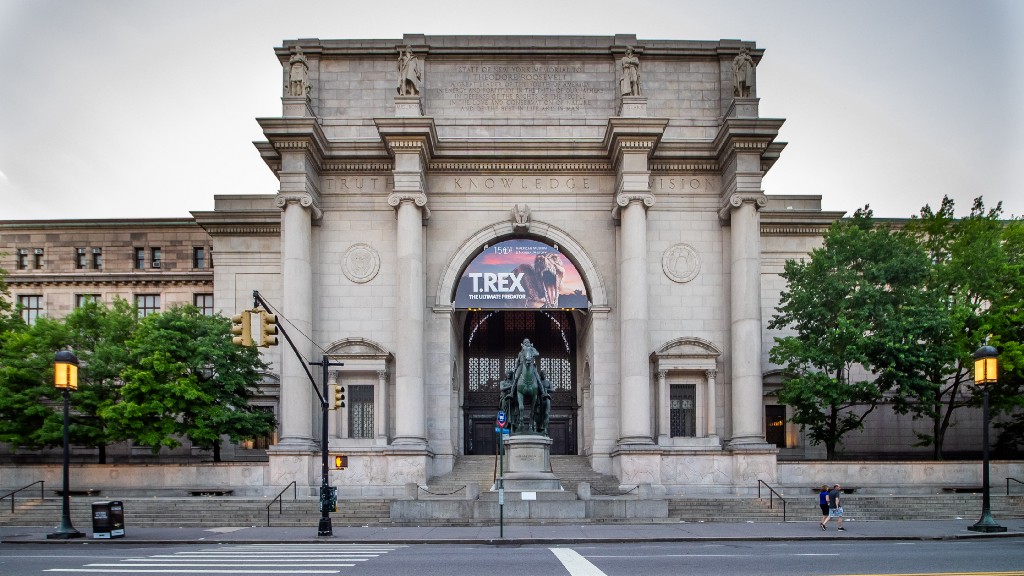
Evolving Digital Opportunities in Collections Management
April 14, 2020 - All
An Interview with John Hansen, Collections Manager, Division of Anthropology at the American Museum of Natural History

John Hansen is the Collections Manager for the Division of Anthropology at the American Museum of Natural History in New York City. The Division of Anthropology is preparing to move from a SQL-based (Structured Query Language) database, developed by AMNH in the 1980s, to a highly customized version of CollectiveAccess, an open-source cataloging software developed by Whirl-i-Gig. Hansen played a significant role in the development and adoption of both databases.
The interview was conducted during the COVID-19 outbreak. The American Museum of Natural History, like all New York museums, was closed during this time. Many aspects of collections management are virtually impossible to execute off-site. However, the adoption of web-hosted content management systems and databases present new opportunities for working from home.
Interview
Q: What is your job title, and please summarize your position?
“Collections Manager, Division of Anthropology, American Museum of Natural History. Broadly, my responsibility is the physical condition of the object collections. This includes not only monitoring the objects but the physical conditions of storage (how things are housed and contained in storage), the conditions of the cabinetry and rooms (archivally stable materials, environmental monitoring, integrated pest management) as well. Object discovery and retrieval is a significant factor in reducing unnecessary handling. For this reason, data creation, data management and digital resource development is also part of my job. I oversee a Collections Management team of three full-time staff as well as assisting with visiting researchers and groups.”
Q: How long have you worked at AMNH?
“30 years.”
Q: What digital tools and technology do you use regularly?
“A custom developed SQLbase database soon to be replaced by a customization of Collective Access database (PHP/MySQL). Daily work includes MSOffice365, Google, and lots of web-based information.”
Q: How has your use of digital tools changed over the course of your career?
“Databases have been integral to the storage rehousing projects conducted by AMNH Anthropology between 1985 and 2016 (?). Initially the database (in dBase IV) was largely a finding aid with truncated fields. Over the years digital imaging became a significant aspect of object representation supplementing the catalog information. There was a philosophical move from finding aid to computerizing the full catalog data with the growth in the power of affordable computing. The expansion and maturing of the WWW facilitated the utility of ever improving digital images and linking data, Finally the web made possible the sharing of information with individuals, institutions and descendant communities around the world.”
Q: What are the main opportunities you see in adopting upcoming technologies?
“Much currently developing technology is built around easy discovery and sharing and linking information. This is valuable to many of the goals of the Division and Museum. Alternate means of learning about, experiencing and contextualizing objects (AR/VR, audio and video supplementary resources) appear to hold a great deal of potential for engagement and education.
Other technologies such as robotics, image recognition and AI are areas that look to have impacts on museum databases and collections management n the more distant future.”
Q: Have you received tech training through the museum and do you plan to have tech training once you move to Whirl-i-gig [CollectiveAccess]?
“I have not received formal tech training from the museum but was engaged in many aspects of the development of the old database. I have been similarly engaged with Whirl-i-gig in the Collective Access customization, especially those relating to the Division. I do expect formal training from Whirl-i-gig when the new database development is completed.”
Q: How regularly and in what capacity do you interact with the digital services department / IT?
“I communicate with IT only a couple times a year, usually relating to specific museum-level digital security issues. IT related issues are usually addressed by the divisional Systems Analyst and Programmer/Developer.”
Q: What are the main challenges the museum is currently facing?
“A public less interested in general academic understanding than in personalized experiences. And, the eternal problem of “not enough space,” for collections objects or digital resources.”
Q: Has the museum had to take steps to provide offsite access to software, internal databases, other digital tools and technologies as a result of museum closure during the COVID-19 outbreak?
“The biggest step for me has been the institutional adoption (pre-COVID-19) of MS Office365 which, with OneDrive, allows for seamless access to email, calendars and documents around the AMNH buildings as well as remotely. There was a plan for broader assignment of VPN access (which would have allowed me secure access to the current database) the rapid actions of the NY government did not leave sufficient time. Serendipitously, I have complete access the new (web-native) database via the web, and so can continue testing the software and familiarizing myself with workflow.”
Q: What challenges have you encountered working from home?
“The biggest challenges are personal, having to discipline myself to focus and isolate from other activities, not having a desktop PC screen for surveying images and simply [not having] the ability to go to the physical objects for data problem resolution.”
Evolving Digital Opportunities in Collections Management was originally published in Museums and Digital Culture – Pratt Institute on Medium, where people are continuing the conversation by highlighting and responding to this story.